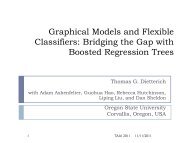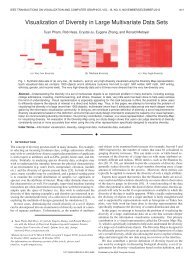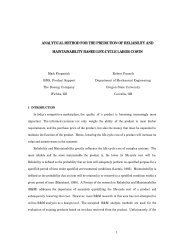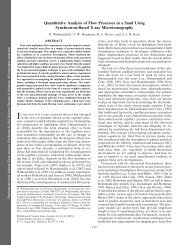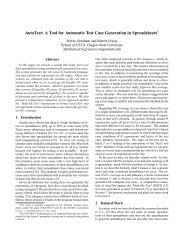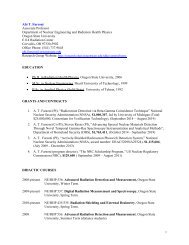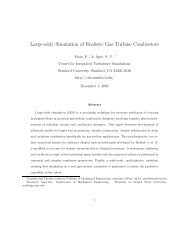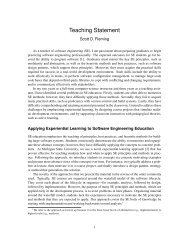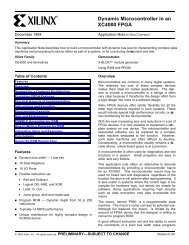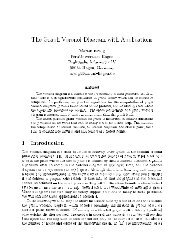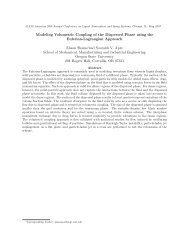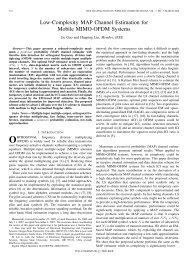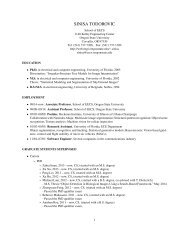DNS of Low Reynolds Number Flow Dynamics of a Thin Airfoil with ...
DNS of Low Reynolds Number Flow Dynamics of a Thin Airfoil with ...
DNS of Low Reynolds Number Flow Dynamics of a Thin Airfoil with ...
- No tags were found...
Create successful ePaper yourself
Turn your PDF publications into a flip-book with our unique Google optimized e-Paper software.
Figure 10: Temporal variation <strong>of</strong> drag and lift coefficients for different actuation amplitudes and differentfrequencies: (a) C d at 10 Hz, (b) C d at 5 Hz, (c) C d at 1 Hz, (d) C l at 10 Hz, (e) C l at 5 Hz, (f) C l at 1 Hz.cycle <strong>of</strong> actuation for an amplitude <strong>of</strong> ∆θ = ±5 ◦ at three different frequencies. It is seen that for the highfrequency <strong>of</strong> 10 Hz (k = 5.71), strong vortical structures created near the leading edge travel downstream.Vortex pairing mechanisms are observed <strong>with</strong> the vortices remaining close to the airfoil surface resulting ina smaller wake region. For lower frequencies (5 and 1 Hz), the separated flow near the leading edge and theshear layer oscillate <strong>with</strong> the actuator motion. The flow remains separated over most <strong>of</strong> the cycle giving alarger wake, and the breakdown <strong>of</strong> vortices observed in the high-frequency case is absent.Figure 10 shows the temporal variations <strong>of</strong> lift and drag coefficients for different frequencies and actuationamplitudes over a range <strong>of</strong> cycles. It is observed that for frequencies <strong>of</strong> 10 and 5 Hz, the lift/drag coefficientsare periodic <strong>with</strong> a phase difference compared to the actuator motion.For large amplitude actuations(10 ◦ ), the variations in lift and drag around a mean are also large. For lower frequencies <strong>of</strong> 1 Hz and also3 Hz (not shown), the drag and lift coefficients oscillate, however, several periods appear superimposed.The fluctuations show similar characteristics as the static-actuation, especially for low frequency and lowamplitude oscillations.Tables 1–3 summarize the effect <strong>of</strong> static and dynamic actuation <strong>of</strong> the leading edge on the mean lift anddrag coefficients for different actuation frequencies and amplitudes. Also compared are the mean lift-to-dragratios to that obtained <strong>with</strong> no actuation. It is observed that any actuation (static or dynamic) results inan increase <strong>of</strong> mean lift-to-drag ratio compared to no actuation. With static actuation (i.e. θ = 20 ◦ forα = 20 ◦ ), an increase <strong>of</strong> 27.7% was observed. As shown in figure 7, the temporal variation <strong>of</strong> the lift anddrag coefficients have a range <strong>of</strong> frequencies superimposed.8



